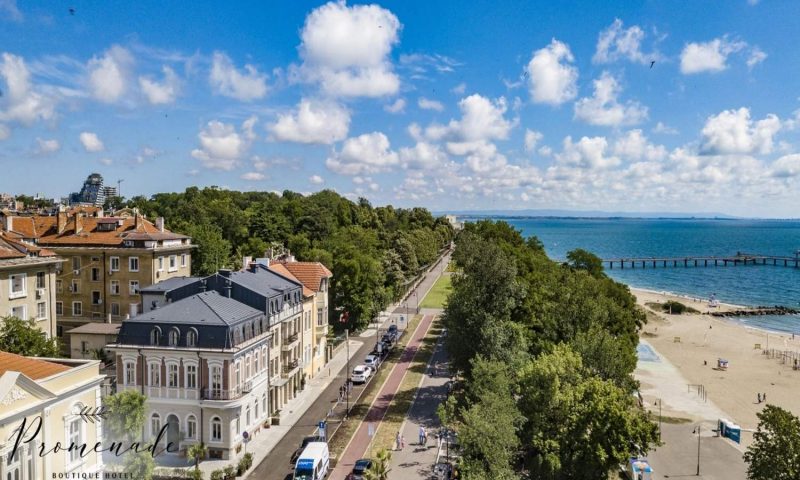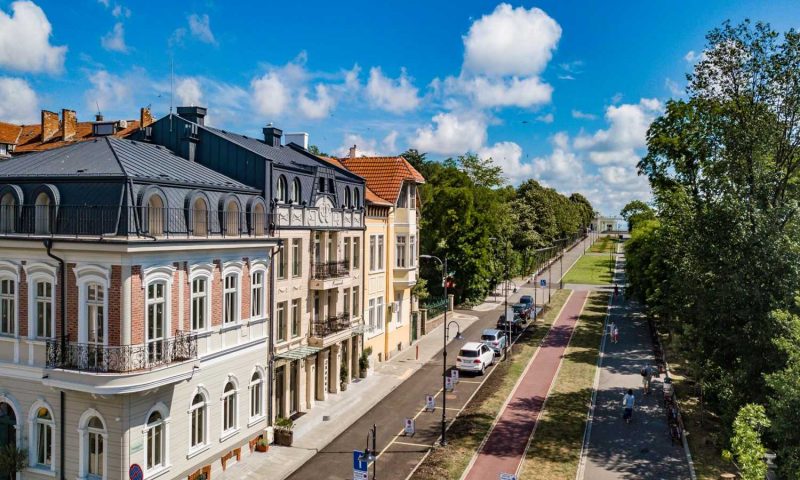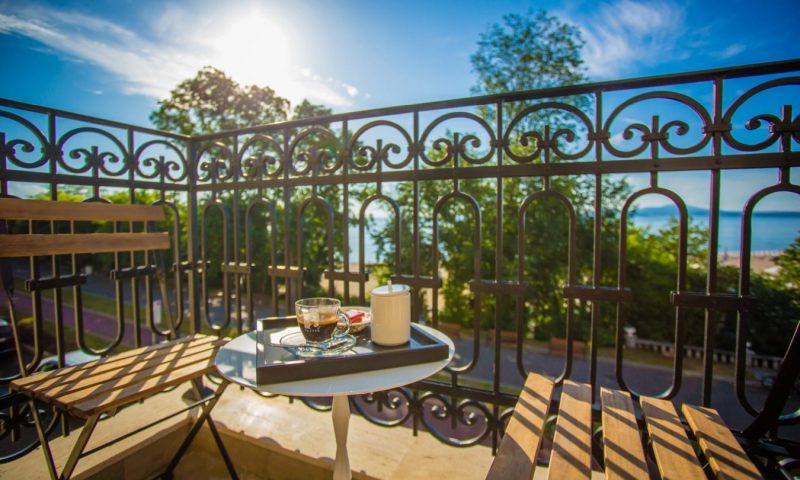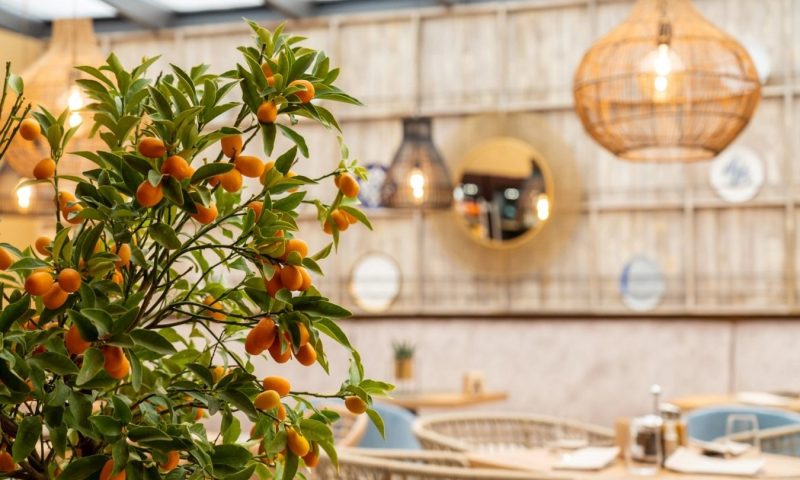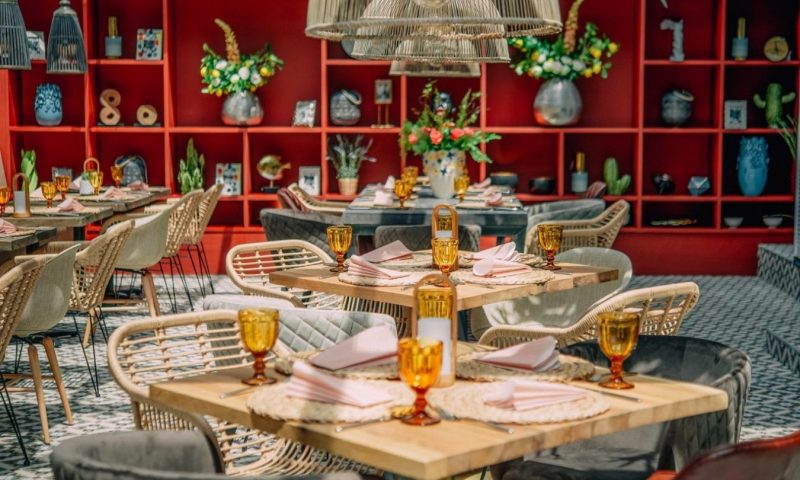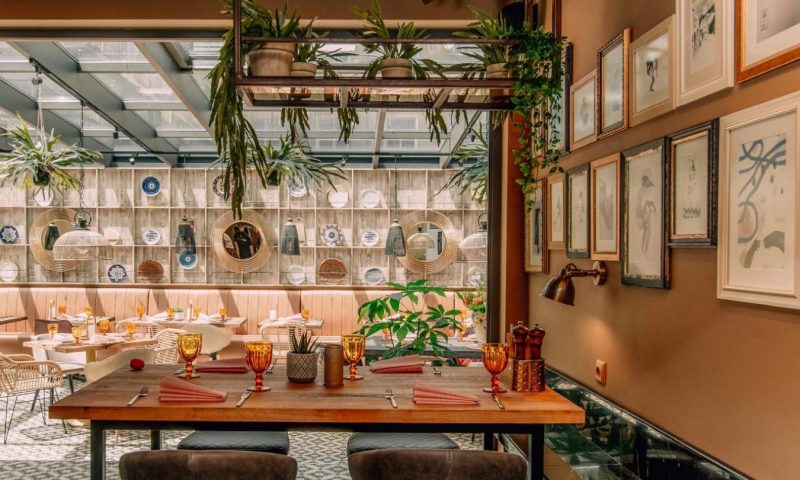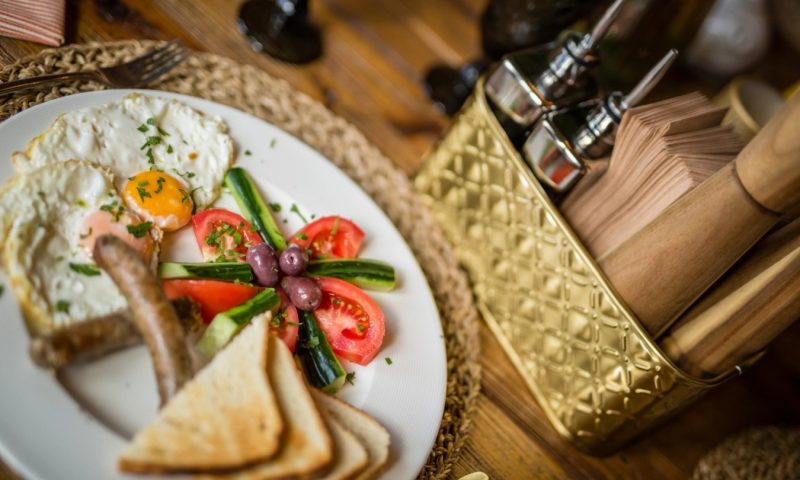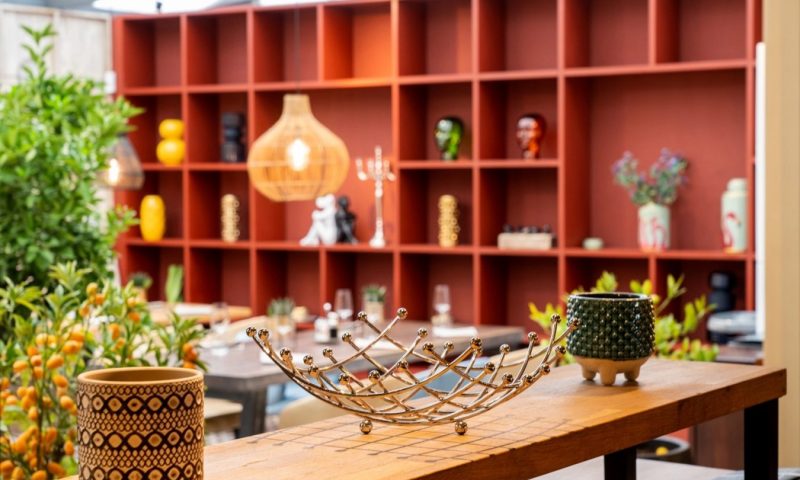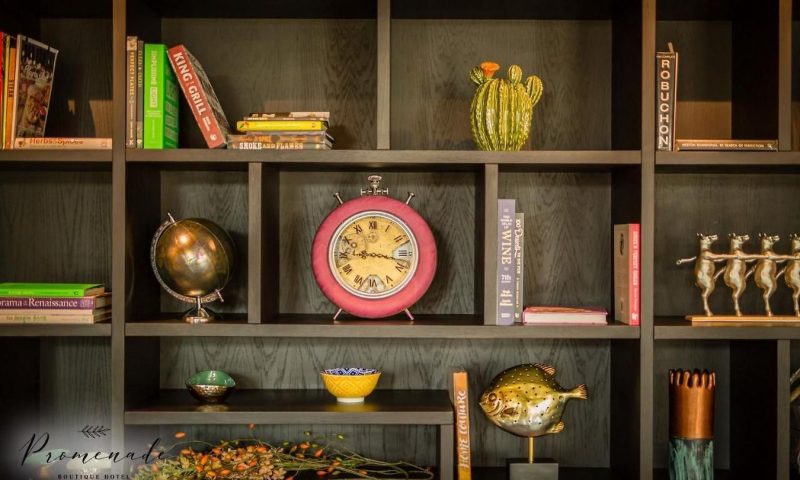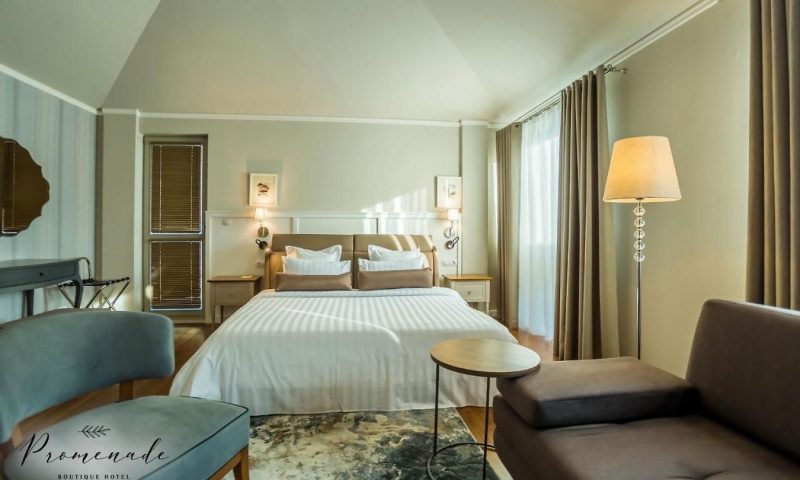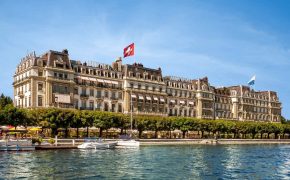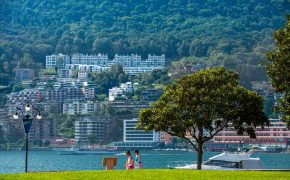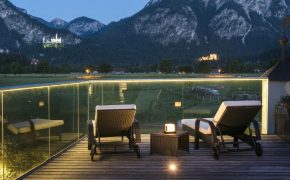Hotel Residence Promenade and Villa Promenade is an elegant and charming boutique hotel and villa in classic French style. They are located in the center of Burgas, next to the coast of the central beach in the Sea Garden, 50 meters from the sea. You will enjoy an authentic and unforgettable experience, with attention to the smallest detail represented by works of art.
We are different because what distinguishes us from other hotels is that here guests receive comfort, impeccable service, discretion. Guests enjoy an atmosphere in the French Art Nouveau style recreated both in the villa and in the hotel.
The villa with its 120-year history has been restored and the exterior architectural layout has been preserved in the spirit of the French “Art Nouveau” movement. Our guests can enjoy a culinary journey in the refined atmosphere of the restaurant and a real 5-star experience, a step away from the seashore, in a wonderful combination with the Sea Garden of the beautiful city of Burgas.
THE VILLA
Iliya Nikolov Zurkov was born in 1875 in the town of Elena. Left an orphan, Ilia was raised by his mother Petra and his older sisters. He studied in his hometown, then in Veliko Tarnovo, and later went to study pharmacy at the oldest university in Graz (Austria). He finished his education in 1899 and settled in Burgas.
In 1900, he started working in Kalkandzhiev’s pharmacy, of which he later became manager. In the same year, the Yunak company was founded in the city, and Iliya Zurkov became an active participant in its activities for 40 years. For 15 years, he was the chairman, and later the honorary chairman of the company.
In 1906, Iliya Zurkov opened his drugstore in Burgas – “Drogeria Zurkov”, which sells various medicinal products, perfumery and cosmetics, becoming a distributor of the world-famous pharmaceutical companies Bayer, Schering, Tsiba-Gaigi, etc.
He is among the founders and chairman of the Burgas Trade Company, a long-time member of the Burgas Chamber of Commerce and Industry. For 27 years he chaired the Association of Druggists in Bulgaria. He is among the founders of the Rotary Club (1937). In the masonic lodge, established in Burgas in 1929 and bearing the name “St. Kliment Ohridski”, Zurkov holds the rank of first master. He died on March 14, 1950 in Burgas.
The Zurkova house is one of the apotheosis of the extremely expressive architectural ensembles located on the former Blvd. “L. Dimitrova”, on the first line in the sea garden in Burgas, 50 meters from the sea. These ensembles were built in the period after the Liberation – 1878 – 1920.
Zurkov’s house flanks the southeast side of “Tsar Simeon I” street and the street flowing towards the main entrance of the Central beach. The house was built and was used by the French and Belgian specialists who were sent to build the Port – in 1900. Subsequently, it was bought by the pharmacist Iliya Zurkov. The house has two floors and an impressive attic.
The interior was in the Rococo style. Unfortunately, much of it is now lost. There is deep plastic woodwork on the doors and windows. The furniture was imported from France, the marble and other stone details were imported from Greece. The wood was imported from Slovenia. /These historical data were collected by the late Arch. Sirkarov. The house has been declared a monument by NIIK.
The exterior architectural layout is in the spirit of the French trend “Art Nouveau” or “Secession” style. There is a renaissance sound in the division, details and shape of the facade. Renaissance forms bring calmness to the external image.
The windows on the ground floor have semicircular frames with a keystone, and on the first floor – with a light upper arch and cornice. The emphasized calm main entrance, arched with rich details, is also impressive. The characteristic feature of the ground floor is the rustication /walls with narrow and wide stripes/, and on the first floor – shaped clinker masonry.
The balcony has an openwork metal railing and consoles. Flaky tin roof cladding completes the striking French Art Nouveau look and feel. During the reconstruction, the brick grid was restored. Without affecting the construction of the house, the jewelry details on the facade were also restored, and the original color range was also restored. The roof covering was also replaced.
During the repair of the roof, we came across an extremely interesting solution to the drainage of the roof from the rains. In an exceptional way, a sewer was built into the walls, with the aim of draining the water into an underground concrete tank /below the level of the yard/.
This system, characteristic of its era and of France, was first found in Burgas, and perhaps it was carried out in connection with the fact that at the beginning of the century, in the central city part of Burgas, there was no water supply and sewage system.
The water under the underground tank, relatively clean, was used for domestic purposes. Unfortunately, when the roof was repaired, this system was not restored, due to ignorance of it and forgotten habits and skills in the art of construction.
Inspired by the exterior architectural French layout, we gave new life to the house and named it “Promenade” or “walk by the sea”. After the renovation, the villa is a 5-star accommodation. For the convenience of its guests, the villa offers a sauna, a gym, an equipped kitchen and an outdoor yard.
Guests will enjoy the grace and intimate-coquettish character of the villa, inspired by Floreal style interior design. Guests will find the combination of a place to relax and a work area, decorated with original works of art (plastics and paintings). The atmosphere of the French Secession is recreated through furniture made of natural materials with an author’s design.
The maximum capacity of Villa “Promenade” is 10 people, which makes it extremely suitable for team building and business presentations. Ideally located with easy access to high streets, shops, restaurants, cafes, galleries, summer theatre, train station, bus stops, ports here is the famous Burgas bridge.
Guests of our hotel can choose one of 5 rooms, all exquisitely decorated in a classic style combined with unique comfort and warmth, which makes them an ideal place for a vacation, business trip or just a leisurely weekend.
THE RESIDENCE
Hotel residence “Promenade” 5* is an elegant and charming hotel located in the center of Burgas, next to the central beach in the Sea Garden, 50 meters from the sea. The hotel is in the style of the old seaside town, combined with the most modern amenities and incredible luxury.
Hotel residence “Promenade” 5* has an architectural layout in the spirit of the French Art Nouveau trend. The artwork adds to the classic feel, allowing you to enjoy the grace and intimate-coquettish nature of the Rococo style. The atmosphere of the French Secession is recreated through furniture made of natural materials with an author’s design. The hotel is decorated with original works of art (sculptures and paintings).
The hotel is cleaned with the most modern technologies in the field of cleaning and fighting asthma and allergies, using water that has certificates: Asthma & Allergy friendly. The rooms are sealed with a germicidal lamp.
THE RESTAURANT
Welcome to the completely renewed restaurant. Уou will find a team with an attitude towards good cuisine and gastronomy. Enjoy the new menu and the culinary delights that we will offer you and immerse yourself in the neat and elegant setting of the restaurant.
EVENTS
Weddings: We can turn your wedding into the wedding of your dreams! Start your family life in a beautiful atmosphere in the French Art Nouveau style. Elegant setting, individual catering and personal service, hotel residence Promenade and villa “Promenade” will turn your wedding wishes into a real event that will leave an unforgettable memory for you and your guests. Your wedding day is a star moment in your life, so it must be perfect.
ABOUT BURGAS
Burgas is the largest city in Southeast Bulgaria – birthplace and home of famous poets, composers, singers, actors, directors, artists, photographers and athletes. The Municipality of Burgas borders the Black Sea, surrounding the large Burgas Bay.
Near the sea coast are the lakes Atanasovsko, Pomoriysko, Mandrensko and Burgasko (Vaya), which form the largest complex of coastal lakes in Bulgaria – unique with its exceptional biological diversity. From here passes the “Via Pontica” – one of the main routes for the migration of European migratory birds.
NESI GALLERY
Nesi Gallery has the ambition to present contemporary Bulgarian art in its diversity, without being limited by techniques, genres and generations. This is accomplished without compromising artistic value. Only tastefully selected works create the rich palette of the gallery.
The mission is to present quality works at affordable prices to the regional market. One of the tasks of the gallery is to help develop a culture of appreciation and collecting of fine art in Bulgaria and the region.
The gallery has a special hall where customers can feel the connection with the painting, adjust the lighting according to their preferences or look at original catalogs with all the works of the authors presented in the gallery, as well as a wide range of complete organization of events – from technical, logistical and PR services, as a necessary basis for the successful implementation, until the transformation of an event into art.
ISLAND OF SAINT ANASTASIA
Burgas Bay is the largest on the Bulgarian Black Sea coast. 41 km wide with black sand, due to the high content of iron, manganese and magnesium, the bay is also the westernmost part of the Black Sea. The earliest human presence on the island is attested during the era of Late Antiquity (IV-VI century).
Proof of this is the abundant ceramic material discovered during the underwater research conducted in 1973. The monastery “St. Anastasia Pharmacolitria (Healer)” is the only island monastery in Bulgaria, part of which has been preserved to this day.
In the Middle Ages, there were such holy refuges on the Sozopol islands of Saint Ivan, Saint Kirik and Julita and on the island of Saint Thomas, but now there are only archaeological remains of them. The church monastery existed until 1923, when the monastery was turned into a prison. 132 communists and farmers were exiled there.
The difficult maintenance of the island prison forced the government to transfer the prisoners to the Burgas police station, and some of them were released. The lighthouse on the island was built by a French company in 1889. It was mounted on an iron pole raised 40 meters above sea level and in good weather its light could be seen from 10 miles.
In 1912, in the northern part of the island, the foundations were laid for the new lighthouse, which guides ships to this day. St. Anastasia Pharmacolitria is among the few female martyrs revered with great zeal and love by both the Catholic and Eastern Orthodox churches.
AQUE CALIDE
The place, which has accumulated a thousand years of history, attracts its visitors with many different possibilities for relaxation and entertainment. The archaeological values found in Akwe Kalide are the fortress walls of the ancient city of Terme (Thermopolis), the Roman baths from the 1st century AD. with a warm and cold pool, various medieval rooms.
They are accessible to tourists through the built modern footbridges that facilitate their passage and viewing. The complex gives the citizens and guests of Burgas the opportunity to visit the completely restored bath of Süleyman the Magnificent. It takes tourists on a virtual tour – from the Thracian era and the legend of the Holy Spring of the three healing nymphs, through the Roman era, the Crusades – to the time of Suleiman the Magnificent.
THE THRACIAN SANTUARY BEGLIK TASH
The Thracian sanctuary Beglik Tash is located in the highest part of cape Beglik Tash (128 meters above sea level), near Primorsko. It covers an area of 6 decares. It is located in a forest territory, which used to be part of the hunting residence of the former communist head of the state Todor Zhivkov (ruled 1954 – 1989). Therefore one of the greatest discoveries regarding the Thracian history on the southern Black Sea coast and Strandzha remained unknown to science until 2003.
The entrance for the sanctuary is from the southwest. A stone “marriage bed” can be reached by a cliff path. Two sacrificial stones surround the bed. Deep baths are dug into them, connected by outfalls for pouring of ritual liquids – wine, milk, olive oil, rainwater. A throne of stone stands next to them; deep outfalls and crossing lines are dug around it, which join and form a large rectangular “sharapana”. Three “menhiris” (large round stones) lie in the eastern part of the circle.
At the top of the highest “menhiri” is carved a “divine step”, 0.6 meters long, 0.34 meters wide. The same “divine step” can be found in the opposite southern section at the foot of the rock terrace. The divine steps mark the innermost sacred place, only determined for the ones, who are initiated to participate in the mysteries. So far, the central platform of the sanctuary is best researched.
It is slightly raised above the surrounding terrain; cave elements, which used to serve in rituals, lie in a circle with a diameter of 56 meters at the platform. They have preserved their natural characteristics but were moved and shaped by humans with the typical sacred symbols and signs. Behind them stands an astronomical clock, made of 16 flat round stones.
Near it is the “Labyrinth” – the path of the ordeal – and a huge dolmen, representing the “holy cave”, where the Mother Goddess gave birth to her son – the Sun God. Pottery, stone tools and weapons, flints, coins, etc. were found during archaeological explorations. They show that the place was created in the middle of the 2nd millennium BC and was destroyed at the beginning of the 4th century AD. The lack of later constructions upon it has allowed the preservation of the unique sacred elements in their original form.
Turn left at the Aqua park in the outset of Primorsko and continue straight ahead, passing near the former Perla residence. The board sign saying “Beglik Tash” is placed at a distance of 4 km from Perla, in the forest. An area for car parking is available there. The last 500 – 600 meters should be walked along a forest path.
NESSEBAR
The ancient city with a thousand-year history is located on a small rocky peninsula, 850 m long and 350 m wide, connected to the mainland by a narrow isthmus. Today, valuable monuments from the various eras of its existence have been preserved: monumental fortress walls, basilicas, a unique water supply system and imperial baths, picturesque medieval churches, Renaissance houses, windmills, narrow winding streets. The greatest treasure of the city are the churches. They were built during the different periods of the Middle Ages.
Among the best preserved are: two of the basilicas “Saint Sophia” or the well-known “Old Metropolis” and “The Virgin of Eleusis”, to which belongs the icon “The Virgin of Eleusis”, silvered by the Bulgarian king Ivan Alexander, as well as the churches of “Saint John the Baptist” , “Theotokos-life-giving spring”, known today as “St. Stephen” or the New Mithropolis, “Christ Pantocrator”, “St. Todor”, “St. Paraskeva”, “St. Archangels Michael and Gabriel”, “St. John Aliturgetos”. Old Nessebar is the historical treasury of Bulgaria.
As early as 1956, it was declared an architectural and archaeological reserve of national importance. Because of its unique historical flavor, in 1983 the city was included in the UNESCO World Heritage List. Nessebar is the only Bulgarian city – World Cultural Value. Today, the old part of the city is an attractive place for romantic walks along the narrow cobbled streets and numerous shops offering handmade souvenirs – ceramic dishes, knitting, jewelry.
Against the background of the wonderful ancient atmosphere, there is a unique opportunity for relaxation. The holiday base is concentrated in family hotels and private accommodation, comfortably and multifunctionally equipped. Nowadays the old part of the town is an attractive place for romantic walks and It’s located about 35 km away from the city of Burgas. You can reach the city for 35 minutes from hotel and villa ‘Promenade”.
ROMAN TOWN OF DEULTUM ,VILLAGE OF DEBELT
The village of Debelt is situated 17 km south-west from Burgas. The name of the contemporary village of Debelt is a modification of the name of the antique town Deultum and the medieval Develt, the remains of which are located at the end of the village. The Roman Colony of Deultum was established here at the beginning of the 70s of the 1st century, during the ruling of emperor Tit Flavius Vespasian, by the veterans of the 8th Augustan Legion.
This is the only colony of free roman citizens on the present Bulgarian territory. There was a port by the town, which was situated by the present Mandrensko Lake. In the following three centuries the town broadened and established itself as one of the richest towns in the province.
During the ruling of Emperor Mark Aurelius (2nd century AD) it was protected by large fortified walls. The town structure is according to the Hippodamus system (a rectangular street network-oriented according to the globe directions), with a very good water supply and sewerage.
Impressive baths with floor heating were found during archaeological excavations. It was built at the end of the 1st century and reconstructed during the following centuries to the end of the 3rd century. The building size, as well as the degree to which it is preserved, are impressive.
The moving of the capital of the Roman Empire from Rome to Constantinople in the 4th century had a great influence on the town development. It turned into an element of the defense system of the empire against barbarian raids and an important communication point.
The first rectangular fortification with an area of 5,000 square meters was constructed around the middle of the 4th century. It was not only covering the roman settlement, but also the upper part of the hill behind it. The east town gate, from which the main street begins, also dates back to this period.
The Slavs also initiated raids during the second half of the 6th century. In 812 Khan Krum conquered Develt and banished the local residents to the north of the Danube river. On their place he settled Bulgarians, and Develt turned into Bulgarian settlement.
During the early Middle Ages, the town became an important border point between Bulgaria and Byzantium. The rising of the level of the Black Sea in the 13th – 14th century led to gradual swamping of the plain around the firth. The port moved to the east in the direction of the contemporary Burgas Bay.
Life in the town declined, and after the 14th century, the name of the settlement is no longer seen in the historical sources. A number of large coin treasures were found during archaeological examinations in the region. Statues, inscriptions, ceramics and small finds have also been found here.
They can be seen nowadays in the Archaeological Museum in the city of Burgas. The fortress was declared an architectural and constructional monument in Issue 65 of the State Gazette of 1965. You can learn more about the fortress in the Archaeological Base in the village of Debelt.
There you can purchase information materials and souvenirs. Deultum was declared one of the Bulgarian Wonders in 2011, selected by electronic voting. One can reach the village of Debelt by second-grade road A-77 from Burgas to Sredets. There are board signs before the road turn for the village.
ATANASOVSKO LAKE
The maintained reservation Atanasovsko Lake is situated north-east from Burgas, in the direction to the city of Varna. In 1970, 170 ha of the north part of the lake were declared a protected territory, and in 1980 they were also declared a natural reservation. On 28 November 1980, the maintained reservation Atanasovsko Lake became a part of the Ramsar Convention (an international agreement for the protection of water birds habitats).
The road Burgas – Varna separates the lake into two parts – a north and a south part. Their average depth is 30 cm. In the past, the lake was famous as a place for salt extraction. The salterns had existed since 1906, when the Atanasovsko Lake had been concessioned for 30 years for construction of salterns. Their construction was abandoned during the First World War. The lake was concessioned again in 1921 to a German company which enlarged the salterns area and in 1934 the first production was present.
The salterns had been used until 1973. Even now, the vaporizers of the Black Sea salterns which extract sea salt are situated on the territory of Atanasovsko lake. The extraction of salt is performed in a primitive way, which has no negative influence upon the reservation inhabitants.
The lake is also known as a habitat of protected species. 316 bird species out of 400 which can be seen all over Bulgaria are found in the region. 14 of them are globally endangered: Pelecanus crispus, Phalacrocorax pygmeus, Branta ruficollis, Anser erythropus, Numenius tenuirostris, Crex crex, Aythya nyroca. 83 out of the 316 bird species are included in the Red Book of Bulgaria, and 170 species are of European natural protection significance.
The Atanasovsko Lake does not freeze during the winter, which turns it into a center of the hibernating water birds. The lake is situated on the migratory way Via Pontica. Together with the rest of the lakes in the Burgas region, it is one of the most favorable places for accommodation of pelicans and storks between the delta of Danube and the Bosporus. During the summer the lake is filled with Himantopus himantopus, Recurvirostra avosetta, etc. bird species.
The most numerous are the colonies of Recurvirostra avosetta, Himantopus himantopus, Sterna Albifrons and Sterna sandvicensis. The white swallow (Glareola pratincola) is the reservation symbol. This is the only place where the Sterna sandvicensis, Larus melanocephalus and the Gelochelidon nilotica breed. More than 250 plant species are found. Multiple sections are weeded to a various degree with Salicornia europaea, and also Typha angustifolia, Typha latifolia, etc. can be seen.
Together with the Iris pseudocorus, Limonium gmelinii and Merendera sobolifera, here visitors can see multiple orchids. The most interesting representative of theirs is the bird nest. It is an almost colorless orchid, and its roots are so tangled that they look like a bird’s nest, where its name comes from.
All wild orchids in Bulgaria are protected species. 17 fish species can be seen in the reservation, the larger part of which is included in the Red Book of Bulgaria (The Red Book of Bulgaria is a list of endangered, disappearing and extinct biological species residing on the territory of the country).
Also, 12 species of rodents, 5 species of entomophagous and 6 species of bat can be seen. A shelter for observing of birds is situated in the northern outskirts of Burgas, at the exit for Varna, in the south part of the lake. One can reach it by a motor vehicle, public transportation, by bicycle or on foot. The shelter has special observation windows so the birds will not be disturbed. There are appropriate optical devices for observing and information about the reservation species in the shelter.
